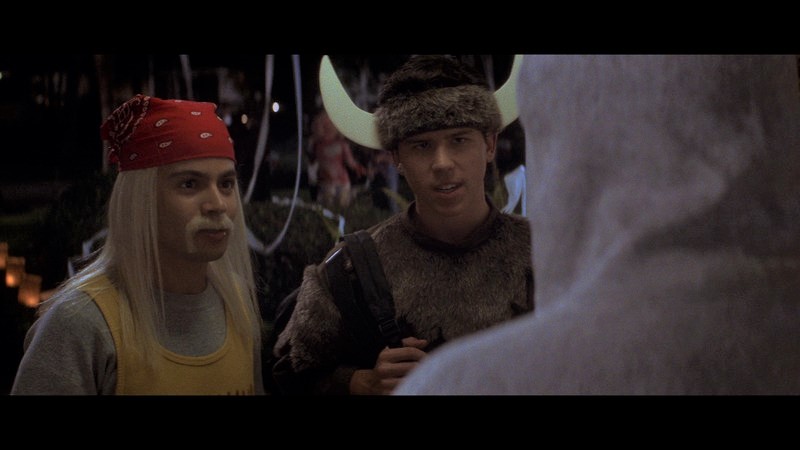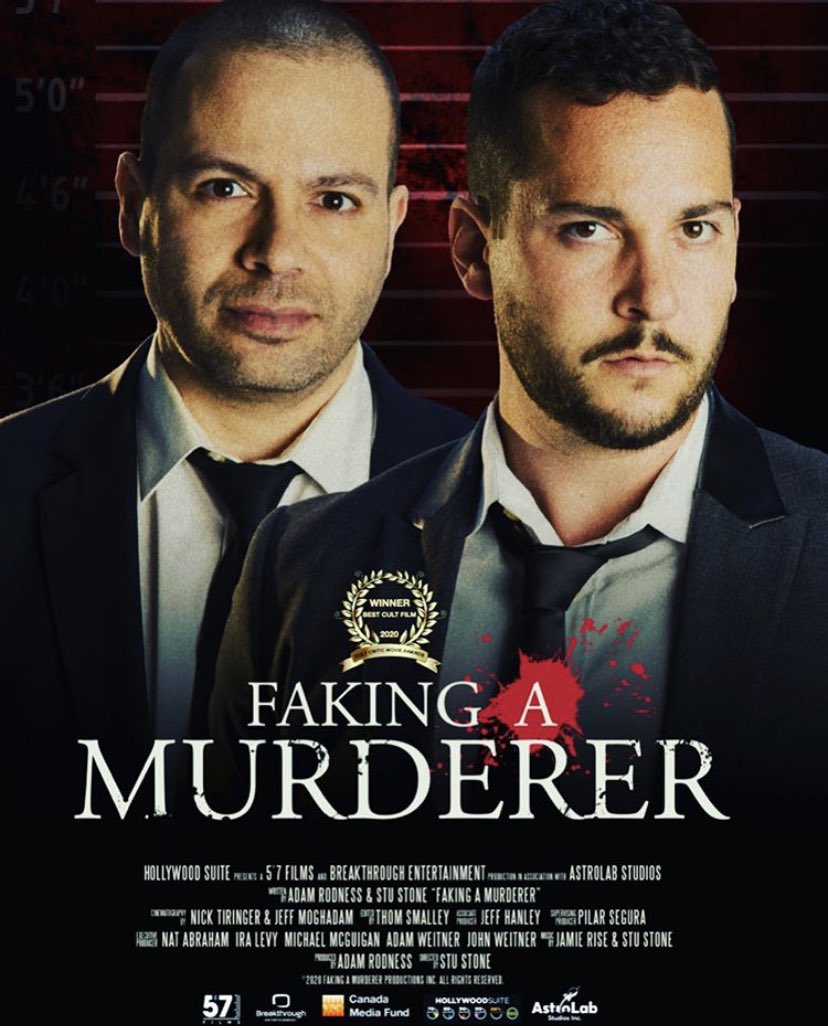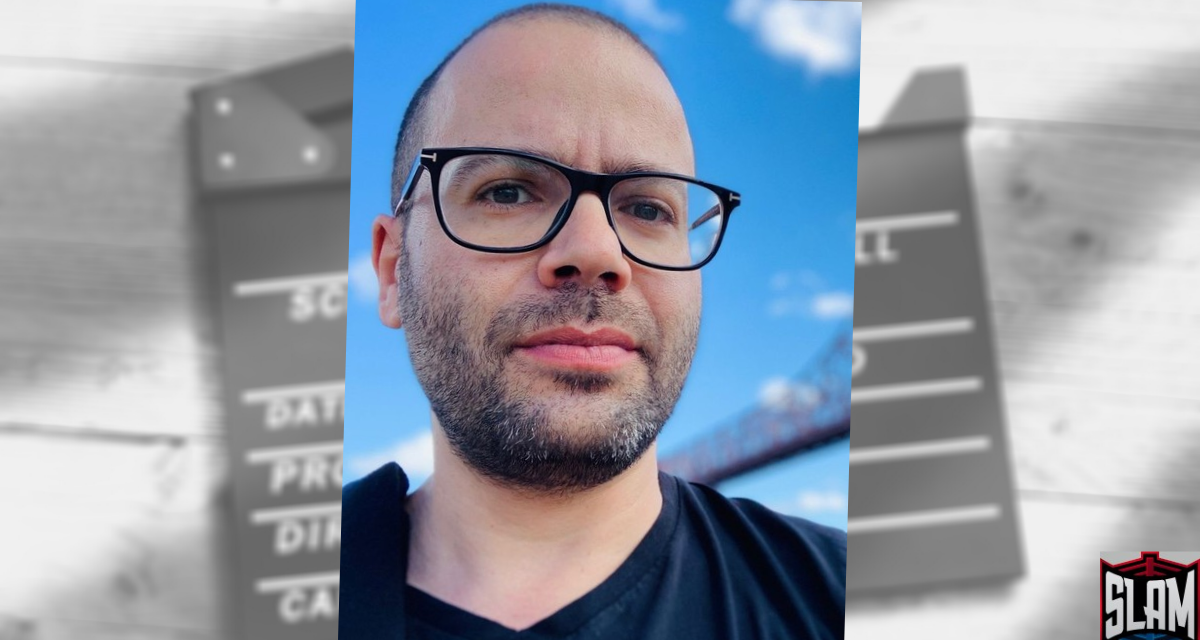In a way, it’s hard to pin down the starting point for Stu Stone’s career, because he’s seemingly hit the reset button on more than one occasion and branched off into new territory. His path has included child acting and modelling, appearing in Hollywood hits, scoring success in podcasting, producing and directing, as well as commentary, managing, and taking a bump or two in wrestling.
Stone took the time to talk with Slam Wrestling about his long and winding road, along with his future dreams and plans in both the film and wrestling industries.
You’ll find Stone towards the end of the above commercial, doing his best to convince viewers that real love comes from eating Kraft Dinner together as a family.
In fact, as Stone explains, it was a family connection that got him started in front of a camera in the first place. “My sister, Karie, she was a model in commercials as a little kid,” he explains. “She was doing a gig one day for a Sears catalogue, or something like that, and she was modelling with a little baby girl that wouldn’t stop crying. My sister’s like, ‘I have a brother in the car, and he looks like a girl.'”
So, two-year-old Stuart Stone had his start in show business.
Stone details how being a child performer was a little different in the 1980s, at least in Toronto. “Back then in Toronto, there were probably ten kids in the city that were professional actors,” he says. “It wasn’t like there are thousands, like there are now, so if they wanted the blonde kid they got that guy. I was the guy with the brown hair.”
Commercials led to TV voice acting, where Stone amassed an impressive number of credits from Babar to The Adventures of Super Mario Bros 3. Growing up with that kind of life outside of school gave Stone a unique perspective on the traditional “what do you want to be when you grow up” conversations in school. “The kids are saying an astronaut, and a baseball player,” Stone remembers. “I was already working — I already had a job!”
Nonetheless, Stone remembers when he was hit by the realization that as much success as he had found, there was always a next step to try for. “I was watching the movie Mrs. Doubtfire,” he recalls, referencing the 1993 Robin Williams film. “The daughter (Lisa Jakub) is this girl that was in McDonald’s commercials with me. This girl that I knew, how is she in a Robin Williams movie? So I convinced my mom to let me just go to L.A. at 16 and see what happens. I ended up staying with (Jakub) — I paid her weekly and slept on her couch.”
It turned out that Stone’s enthusiasm outreached his preparation, as he admits he knew nothing about the labor laws of the U.S. and wasn’t eligible to work on any productions. Still, it helped in a roundabout way. “As soon as I got back to Toronto, this is six months after going to L.A., my career started blowing up,” he recalls. “It’s as if you go to L.A. and you’re a made man or something. I did a movie called The Boys Club (with Chris Penn), I did a show called Flash Forward with Disney Channel. The Magic School Bus was right around there. It was insane. I was able to apply for a visa and go back, and I stayed for 20 years.”
Acting, therefore, was Stone’s professional passion all throughout his childhood. His passion as a fan, though, belonged to the squared circle. “The whole way through I was obsessed with wrestling,” he offers. “That was my favorite thing. It started from seeing Tiger Mask on TV with my grandmother, going to Maple Leaf Gardens to see The British Bulldog, Kamala, and Hogan, and just falling in love with everything to do with wrestling. Everybody else grew out of it, some of us don’t, though.”
“When I was a little bit older, there was Donnie Darko,” Stone continues, referencing his role in the 2001 sleeper hit film. “I got to pick my own Hallowe’en costume in the movie and I dressed as Hulk Hogan.”

Stone in his self-chosen Hogan costume in a still from Donnie Darko.
“I don’t get excited to meet celebrities; I get excited to hang with wrestlers.”
As it turns out, Stone was able to do much more than just hang with them. As he settled into Los Angeles, arguably reaching his greatest notoriety by collaborating with Jamie Kennedy for the MTV series Blowin’ Up, which saw the duo seeking to kickstart careers as rap artists, Stone found a way to apply both his performance training and love of wrestling.
It started with Colt Cabana.
“I had been working on the documentary The Sheik,” Stone begins, recalling his role as one of the producers of the film. “We were interviewing all these wrestlers at a convention in Los Angeles, and one of the wrestlers I met that day was Colt Cabana. He was a fan of (Blowin’ Up), and we started talking and we became friends. Colt was very interested in doing a podcast, and I said to him, ‘I’ll help get you get a podcast going if you get me a job in wrestling.'”
“You know what happened with that — his podcast blew the hell up and he really made a career out of it. In turn, he introduced me first to Kevin Kleinrock, then David Marquez.”
Kleinrock, and more directly Marquez, helped to bring Championship Wrestling from Hollywood (CWFH) to television in 2010. Originally affiliated with the NWA, the promotion broke away in 2012. Thanks to a good word put in by Cabana, Stone found himself getting an in as commentator. There was, though, one seemingly unfortunate problem that nonetheless created a golden opportunity.
“As a commentator, I was the worst — I was so bad,” Stone acknowledges. “They couldn’t wait to get me off of commentary. They ended up bringing in Excalibur to start calling shows. They took me off of commentary, and from there it was just magical. I became like Bobby ‘The Brain’ Heenan. I had a family, The Family Stone, and I managed Adam Pearce, who’s now the General Manager of WWE (SmackDown). I managed him to the NWA World Heavyweight Championship.”
During this time, Stone remembers “getting it,” and attuning his performance instincts into his developing wrestling character. He ended up back on commentary, and found his role with the company expanding.
“Dave started having me help the guys with their promos,” Stone recalls. “I started producing the promos, and I did that for about four years. A lot of the great talent that is now with NXT, WWE, and AEW, were guys that I worked with when they were just getting their feet wet.”
“I started working for Criss Angel, producing his magic show,” Stone continues. “I was in Vegas a lot, and I saw that there was a Vegas league called FSW (Future Stars of Wrestling). Some of my buddies are on the show, so I ended up talking to the promoter Joe (DeFalco), and he was like, ‘Yeah, come on in, and bring your act that you do in Hollywood and do it here.'”
As Stone lists off the people he’s worked with and is thrilled to see in high places, it doesn’t feel like name-dropping but genuine happiness to see them enjoying success. “It was like an All-Star game,” he says, describing some FSW shows that DeFalco put together in Arizona, circa 2015, for which Stone was on commentary. “The Young Bucks, Tommaso Ciampa, Brian Cage, Drew McIntyre — whoever wasn’t signed to anywhere was on these shows.”
“Up and down the coast, I was doing shows with all these guys that are in AEW now. It’s really amazing what AEW has done to give all these guys a big platform. I did some work with AEW back in November (of 2020), and just going there and just being backstage, seeing all my friends, and they all have contracts and are wrestling on TNT … it’s incredible. I can’t believe they pulled it off.”
“Ten years ago you never would have thought that it’s possible for somebody else to do anything close to the WWE. It’s pretty crazy.”
Stone returned to Toronto in 2015 for an opportunity to co-write and direct the comedic-horror film The Haunted House on Kirby Road. It was released in 2016, and led to further directing projects in the Toronto area. Still, that meant he had to have a reason to no longer appear for FSW or CWFH.
“We wrote a storyline in FSW where Kevin Kross (now Karrion Kross in NXT) broke my neck, and that got me out of Vegas,” he explains. “In Hollywood, this guy Bateman, who’s now in Ring of Honor, he broke my neck. So, I have a broken neck in two places. I’m just sitting on the sidelines, healing my neck and getting ready to come back any moment now.”
Stone delivers that with a practiced promotional flair, but when asked about whether his heart belongs more in film or wrestling, he offers up some reflective thoughts on what opportunities he might have been able to chase down in the wrestling industry.
“I really didn’t play the game right, I don’t think,” Stone admits. “I was just hoping that magically the phone was going to ring. Every person that you see on NXT that has a deal, those people bugged the shit out of NXT. I didn’t do that, and maybe that cost me, but I think there’s an opportunity for me when things settle down for me production-wise. I can see myself really taking a crack at doing something with WWE or AEW. I don’t know what role, but I know I have a lot to offer.”
Stone makes no pretense, though, about what he has to offer is as manager, commentator, or producer — not an in-ring worker. “We did this program (in CWFH) where I was pretending I was this giant, and picked on this guy named Rudy,” Stone remembers. To set that scene, Stone stands in at 5″7, while Rudy countered at 5’1″. “We had a match, and I was literally going to puke 30 seconds in.”
“People who watch wrestling don’t realize that the cardio that it takes just to start the match would kill most people.”
Indeed, having been both in front of and behind the camera for both acting and wrestling productions, Stone has an experienced perspective on the qualities shared by both types of performers. In his mind, it’s the wrestler with both the taller order and the biggest pay-off.
“A great story that you could tell as a movie is the same story that you could tell as a wrestling storyline,” Stone offers. “In a way it’s almost unfair that an actor gets twenty takes, and then an editor can edit all the takes together and make it perfect. A wrestler’s got to do it live on the fly, it’s almost like Broadway acting along with stunts.”
“Wrestling a hot match in front of a hot crowd … that’s where the magic is.”

All of this is not to say that Stone has lost his love of film and TV magic, though. While he continues to recover from both kayfabe broken necks, he was a driving force and on-screen subject for a documentary called Jack of all Trades, ostensibly about Topps baseball cards, but also about Stone’s relationship with his father. He also created a satirical look at real-life crime programming with his brother-in-law Adam Rodness in the film Faking a Murderer.
Jack of all Trades is available for streaming online, and Faking a Murderer is currently available on demand in Canada through Hollywood Suite, with an upcoming release in the U.S. as well.
Both the wrestling knowledge and film work came in handy, as VICE’s Dark Side of the Ring team hired Stone to serve as one of the producers on this season’s 14 episodes, debuting May 6.
Whether his focus is on red carpets or wrestling — or both — if the next 40-some-odd years are anything like the first, you can expect Stone to keep on his toes and to stay busy.
RELATED LINK
- Stu Stone on Twitter
EDITOR’S NOTE: The spelling of Stu Stone’s sister’s name has been corrected from the original publication.

